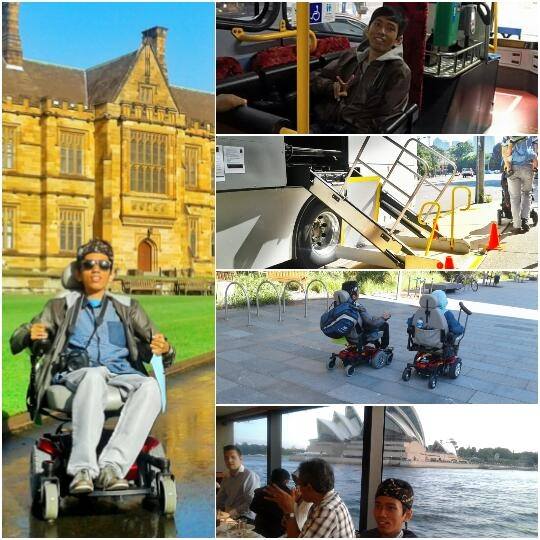Dreams do not come true on their own, they have to go through process and hard work. The Qantas Airways flight from Soekarno-Hatta Airport on 15 January, brought me along a new journey. I was on a journey to realize my dream. The exhaustive 7.5 hours I spent on-air crossing to another continent didn’t stop me from shouting with joy once I arrived in Kingsford Airport. For the first time ever, I stepped foot on the kangaroo continent, Australia.
I was one of the recipients of the Australia Awards Short Term Awards. I represented one of the organisations for people with disability in Bandung, the Bandung Independent Living Center (BILiC), to learn more about leadership and management for organisations for people with disability. The Short Term Awards, titled “Organisational Leadership and Management Practices for Disabled Peoples’ Organisations”, was carried out by the Sydney Southeast Asia Centre, a division at the University of Sydney, from 18 through 29 January 2016.
Over the course of two weeks, 24 other awardees representing Indonesian DPOs and I studied at the University of Sydney. The awardees were diverse and inclusive, comprised of those with limited mobility (crutches, wheelchairs), those who are vision impaired, hard of hearing, as well as those who are able-bodied and are carers (personal assistants and interpreters). We lived together in a lodging called Urbanest Darlington, City Road 152, right across the campus.
I’m a person with disability utilizing a wheelchair. The Progressive Muscular Dystrophy (PMD) I have requires sufficient accessibility for mobility. Travelling to a first world country gave me a different accessibility experience compared to what I experience on a daily basis.
The active wheelchair users and other mobility impaired as well as I were rented electric wheelchairs to assist us in getting around. We were briefed on how to use them when we arrived at Urbanest Darlington.
The electric wheelchair takes form as a chair with a control panel to operate it by the hand. The buttons to operate it included the on/off switch, horn, stick shift for manoeuvring, speed control and battery indicator. The backrest can be automatically adjusted to lean backwards, fitted with a safety belt. I didn’t find it too difficult to adjust to the electric wheelchair. It merely took me five minutes to be able to operate it. This wheelchair became an extension of myself while in Sydney.
The Urbanest Darlington is approximately one kilometre away from the University of Sydney where the awardees studied. The course itself ran for two weeks. Electric wheelchairs were deemed as an appropriate solution as manual wheelchairs would encumber the awardees. In addition, the awardees could experience the facilities and infrastructures on and off campus using the electric wheelchair.
I was in awe that the Urbanest Darlington lodging already provides disability accessible rooms. There were more than one of these rooms, as evidenced by the three wheelchair users being placed in disability accessible rooms on different floors. For safety and comfort, awardees who brought disability assistants along were placed next to each other. Notri Lidia, a participant from Padang, and I were among the ones who had disability assistants.
The disability accessible rooms were 6x6 meters wide. It consisted of a full kitchen and bed. The restroom inside the room was enormous and fitted with an accessible sitting toilet and wall-attached folding board for showering. Other awardees that were hard of hearing, vision impaired or require other forms of assistance were placed in a common room comprised of four rooms with one kitchen. It was all well arranged.
Another form of accessibility at Urbanest Darlington is the warning sign at the first five steps of the stairs in front of the lobby. The round warning sign serves as a marker for the visually impaired to assess the situation before them. There is a very gradual ramp with handrails on both sides to facilitate wheelchair users without them having to pick up their wheelchairs. The elevator at Urbanest is equipped with Braille and there are disability accessible restrooms available.
The University of Sydney is one of the best campuses that Sydney and Australia have. I am able to say so because to me, the best entails providing accessibility that eliminates barriers. Each building, be it new or old, are equipped with gradual ramps with handrails on each side.
Even the restroom are accessible—I experienced it while studying at the new building for two weeks. One of the accessible restroom already employs an electric door, making it easier for a person with disability to enter the restroom. The campus, established in 1850, also has a centre for disability studies and centre for disability research and policy.

A Disability Friendly City and Public Space Accessibility
The streets are the most accurate portrayal on the actual reality of public space—the reality of public behaviour as well as the availability of facilities and public space by the government. Our government sometimes forgets to grant pedestrians their right. It could also be that the public themselves could care less about their accessibility to walk.
The city of Sydney grants the right of its pedestrians. The curbs are wide without any obstructions, there are no trees in the middle of a walkway. The lack of obstruction also facilitates people with disability to freely move independently.
The lights at crosswalks are equipped with sound to provide accessibility for the visually impaired. At certain intervals, the curbs are equipped with signs or symbols to provide information, in addition to being equipped with Braille. When a curb turns into an incline, stairs or different direction, there is a round guiding block symbol that serves as warning, making it accessible for the visually impaired. I tried to manoeuvre around Sydney—all the curbs meet accessibility standards.
The bus serves as the most common mass transportation used by the general public. This includes the public with disability as the buses in Sydney are already accessible. I got to experience the ease of taking a bus fitted with hydraulics. The bus can be lowered almost parallel to the curb. A ramp can be extended out from the bus to facilitate the wheelchair in. The bus also has space for a maximum of two wheelchairs.
I experienced a similar ease when I boarded a train. From the entrance to the exit, it was so easy to go about with accessibility such as entrance/exit lanes to and from the station, elevators and restrooms at the station. When a person with disability is about to board a train, an officer will immediately bring a portable ramp over so that the wheelchair user can easily enter the train. And just as the bus, there is room for wheelchairs in the car which is also equipped with accessible information. The same can be said regarding sea transportation. It is very easy to board a boat as an entrance onto the boat is provided without one having to be carried off the wheelchair. Accessible restroom is also available on board.
Not all taxis are wheelchair accessible, but a few taxi companies already have accessible taxis in the form of vans to facilitate passengers on wheelchairs without the passengers having to get off the wheelchair. The back of the van is fitted with a hydraulic to get the wheelchair into the taxi. Meanwhile, the interior is equipped with a lock to hold the front and back wheels of the wheelchair to ensure the safety of the passenger on it. The van is also equipped with a seatbelt across the stomach.
The hindrance-free experience I had was not only through physical accessibility, but also through the attitudes of the officers, from the taxi drivers, bus drivers to the officers working in public transportation that are equipped with knowledge on how to assist people with disability. I gathered that information when I asked the taxi driver during our chat.
My visit in Sydney was indeed short, but it left me with a memorable experience. My experience in Sydney proves that accessibility can be realized. As an Indonesian, I have the right to hope and create a breakthrough in providing the same opportunities for people with disabilities and true accessibility in my own country.
The original article appeared in www.solider.or.id. Translated and republished by Australia Awards in Indonesia with permission from the author.


 An Account on Sydney, a Disability-friendly City
An Account on Sydney, a Disability-friendly City
